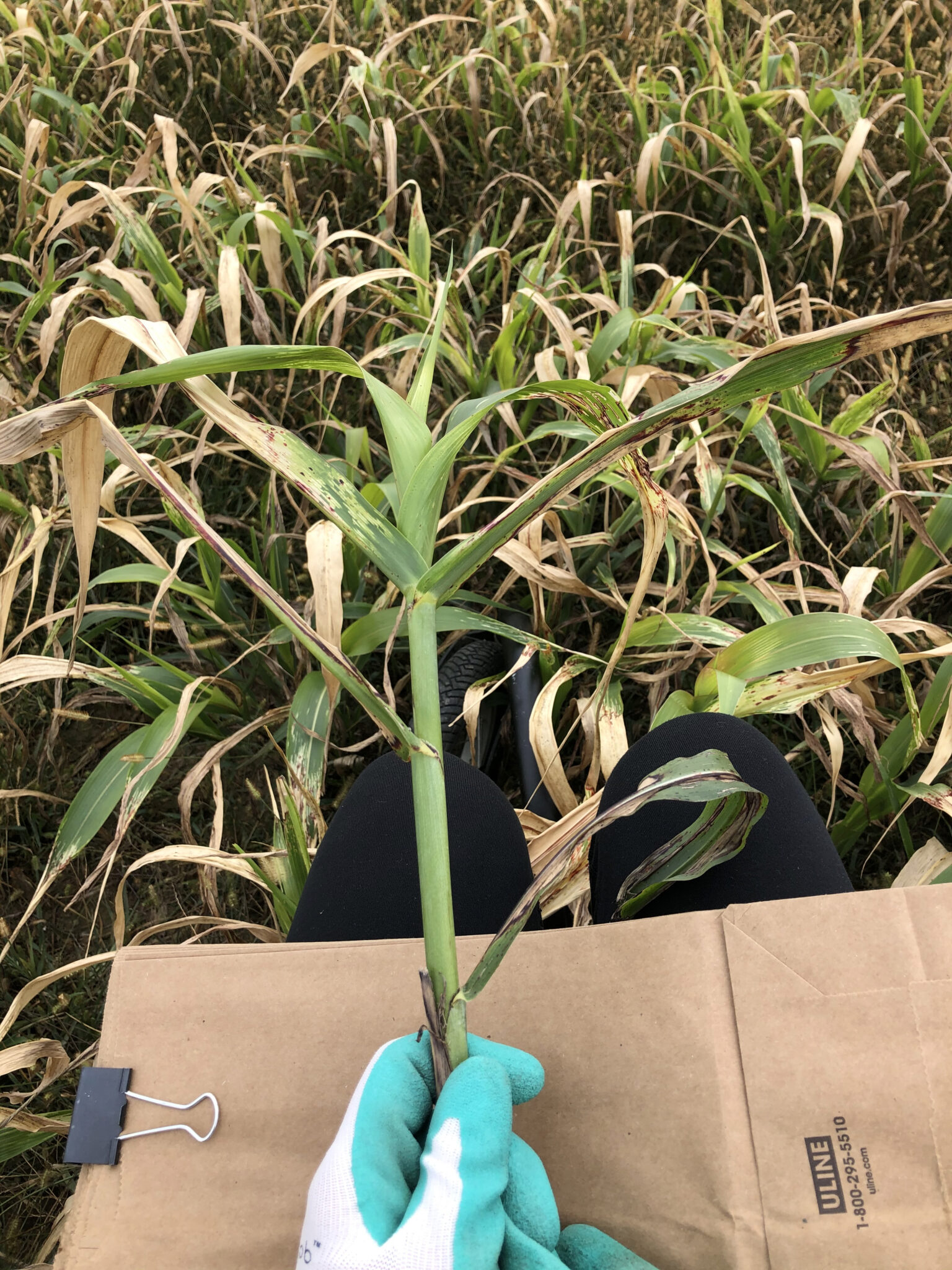Nights are beginning to get cooler, the first frost is approaching, and you may be questioning whether your livestock should be removed from your forage sorghum pastures.
Here are some commonly asked questions about what to do if your field gets frosted.

Photo shows frost damage on sorghum x sudangrass. Brown leaf tissue was killed by frost. Green tissue could have increased prussic acid potential. (Photo Credit: Shelby Gruss)
Should my livestock be removed from the field? And why?
Yes, your livestock should be removed from your sorghum fields if a frost is predicted for that night.
Prussic acid (hydrogen cyanide) potential can increase due to frost damage. Sorghum species (forage sorghum, sorghum x sudangrass, sudangrass, and Johnsongrass in a pasture) all produce prussic acid, but generally are considered safe when they reach 18 to 24 inches tall. Frost, however, can increase prussic acid production.
Preferably, it is best to utilize sorghum before the first frost occurs or to let the plant totally die from several killing freezes and to graze it then.
How long should the livestock be removed?
There is not a straightforward answer, but generally speaking animals should be removed for seven days. If another frost occurs during that timeframe, the seven days starts again.
Is there a way to utilize sorghum to reduce prussic acid?
Yes, sorghum utilized as a silage will help reduce prussic acid potential as compared to grazing, but care still needs to be taken to make sure it has been reduced to safe levels. Sorghum that could be high in prussic acid should not be used directly for grazing or harvested as a hay.
Remember, for most safety utilize the sorghum before the frost happens.
For more information refer to this video:
Be careful when utilizing sorghum as hay after a frost. New data shows that hay does not help decrease prussic acid potential.


